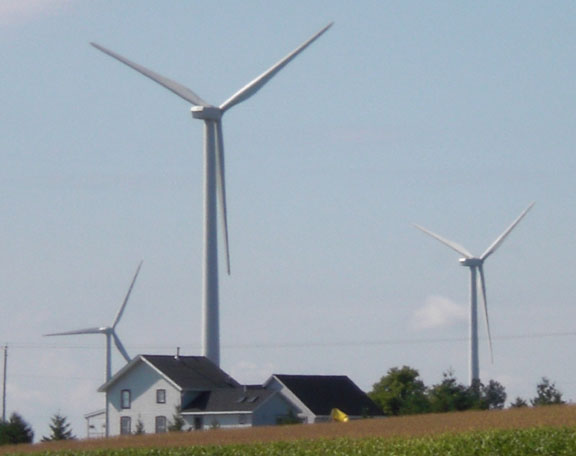
In The New York Times on Thursday, John M. Broder writes about a blood sport that has become quite popular among the field of Republican presidential candidates: attacks on the Environmental Protection Agency. Yet the candidates recently found time to rally behind clean wind energy, a topic some voters identify with a somewhat more liberal agenda.
At the Saturday straw poll in Iowa, the G.O.P. contenders Mitt Romney, Tim Pawlenty, Ron Paul, Newt Gingrich, Herman Cain and Thaddeus McCotter autographed a giant 130-foot wind turbine blade to show their support for Iowa’s burgeoning wind industry as a source of home-grown job creation.
TPI Composites, based in Newton, Iowa, manufactured the blade and currently employs 700 workers at a former Maytag plant, according to its chief executive, Steve Lockard. The American Wind Energy Association, a trade association and lobbying group, sponsored the event on Saturday.
It was one of about 30 such displays set up by organizations and political action committees on the Iowa State University campus.
Michele Bachman, the top vote-getter in the straw poll, was not present at the signing, although according to Peter Kelley, the wind energy association’s vice president for public affairs, her staff members had conveyed her interest in attending.
Texas is the leading state in installed wind capacity with 10,085 megawatts, while Iowa is second with 3,675 megawatts, accounting for almost 20 percent of the state’s electricity generation in the first quarter of 2011.
Over 200 companies are now involved in Iowa’s wind industry. Since the state adopted a renewable energy standard in 1983, the industry has generated almost $5 billion in investment, according to estimates from the wind energy association.
Iowa’s wind generation capacity will soon get a boost when the MidAmerican Energy Company, one of the country’s largest wind project developers, completes the 444-megawatt Rolling Hills site this year in southwestern Iowa.
But while Mr. Lockard expects demand for his wind turbines to remain strong through 2012, he expressed concern during Saturday’s event about 2013 and beyond because of the impending expiration of the so-called production tax credit. This incentive provides a per-kilowatt-hour tax credit for companies generating electricity from renewable sources.
The credit has faced expiration before but has then been renewed and expanded several times since its enactment in 1992 as part of the Energy Policy Act. In 2009, the Recovery Act sweetened the incentive by allowing developers to receive a grant from the Treasury Department in lieu of the tax credit, meaning the government would finance 30 percent of the project cost.
According to Mr. Kelley of the wind energy association, the production tax credit has been the single most important piece of legislation allowing wind to compete with other sources of energy like coal.
At Saturday’s event, Mr. Pawlenty, who has since withdrawn from the race, and Mr. Gingrich spoke in favor of extending tax incentives in the form of production tax credits. Where the other candidates stand on the issue is less clear as the topic was not discussed during the debate preceding the straw poll .
Mr. Romney does not specifically address the issue on his Web site. Ron Paul is generally opposed to tax breaks for any energy producer. Both he and Ms. Bachmann have previously voted against tax incentives for renewable energy production.
“Uncertainty over whether the P.T.C. will be extended has already caused layoffs and bankruptcies in the wind energy supply chain,” Mr. Kelley said. Ensuring that the credit is renewed “will be our top legislative priority in Congress this session,” he said.


